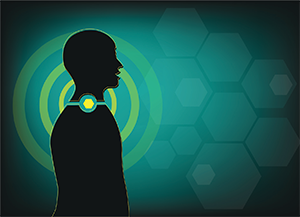A panel of voice experts delved into a type of case that many otolaryngologists may find difficult to diagnose: dysphonia without lesions or problems with vocal fold motion. The discussion mainly touched on scarring, muscle tension dysphonia, and essential tremor.
Explore This Issue
June 2017Clark Rosen, MD, moderator of the session and director of the University of Pittsburgh Voice Center, said that these cases are often vexing to some general otolaryngologists. “When we see people with dysphonia, and they’re clearly dysphonic, but you look at the larynx and there’s no obvious lesion [and] no obvious motion impairment, the question is, why are they dysphonic?” he said. “In talking to my general otolaryngology colleagues, it would be this group of patients they struggle with the most.”
The differential diagnosis for dysphonia without a vocal fold lesion or motion impairment includes primary muscle tension dysphonia, vocal fold atrophy, secondary muscle tension dysphonia associated with glottal incompetence, essential tremor of the vocal tract, spasmodic dysphonia, vocal fold scar or sulcus vocalis, inflammation, and a functional or psychogenic cause.
Case 1: Hoarseness after Cough

© Crystal Eye Studio / shutterstock.com
Panelists discussed the case of a 64-year-old woman who, for four months, experienced hoarseness that started with a bad cough. She had no past voice problems, but had prior tobacco use and chronic obstructive pulmonary disease (COPD). She had a Voice Handicap Index-10 (VHI-10) of 32.
The panelists offered some tips on their initial evaluation.
Norman Hogikyan, MD, professor of otolaryngology at the University of Michigan in Ann Arbor, said he would take a long listen to her voice before using an endoscope. “I think too often people will jump to drop in the scope to try to understand what’s going on. … I’d like to interrogate her vocal capabilities a little bit more [and] listen to some non-voice laryngeal tasks. I’d like to listen to her doing a sustained voice task, and I’d also like to assess her range.
Mark Courey, MD, director of the Grabscheid Voice and Swallowing Center at Mount Sinai in New York City, agreed. “I would try to have her talk a little bit longer and get some sustained phonation,” he said. “And I would also be palpating her neck when I was doing this to see what was going on with her neck muscles.”
Michael Johns III, MD, director of the University of Southern California Voice Center in Los Angeles, emphasized the value of an “up-close evaluation” on endoscopy. “We can gain a lot of information from a very detailed, high quality anatomic examination.”